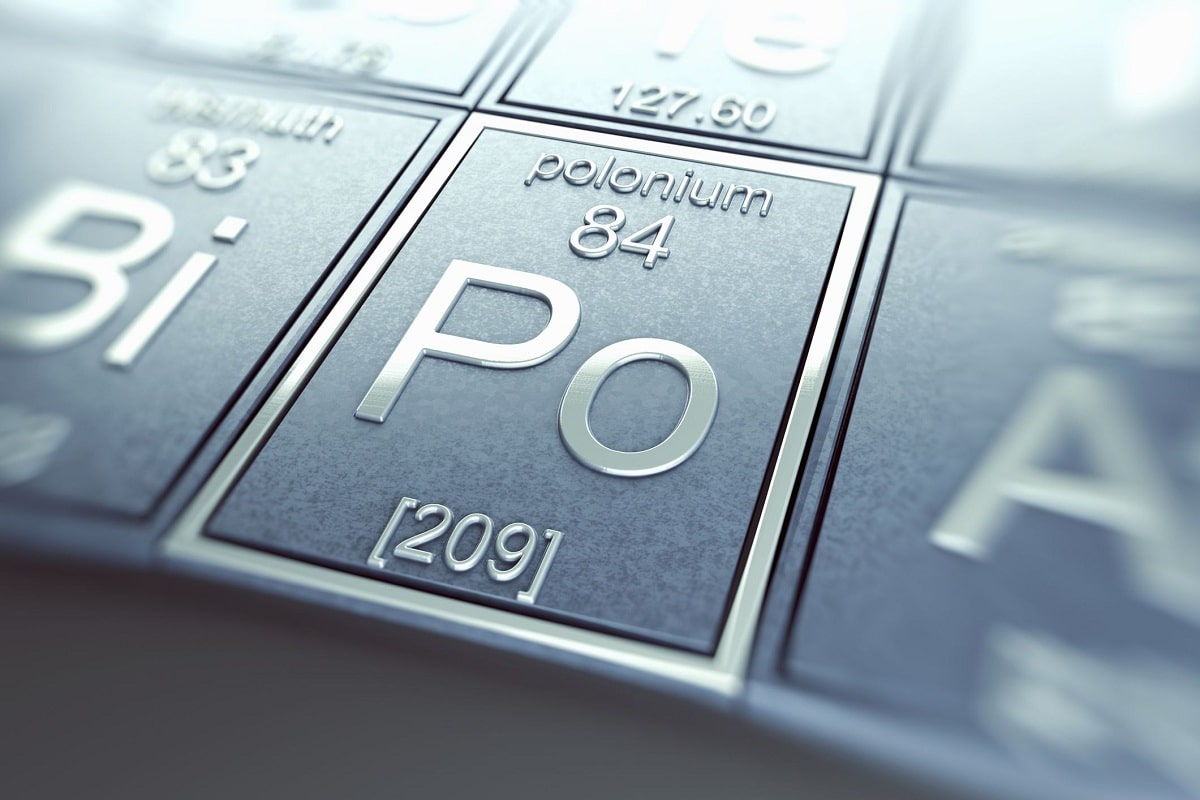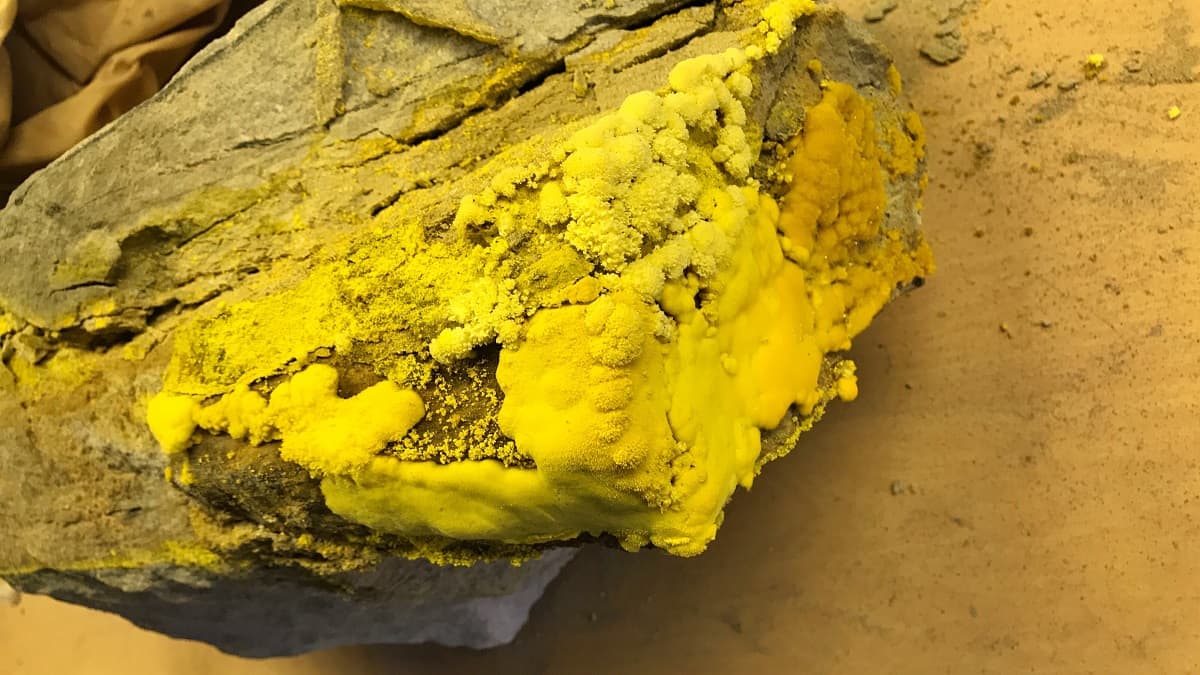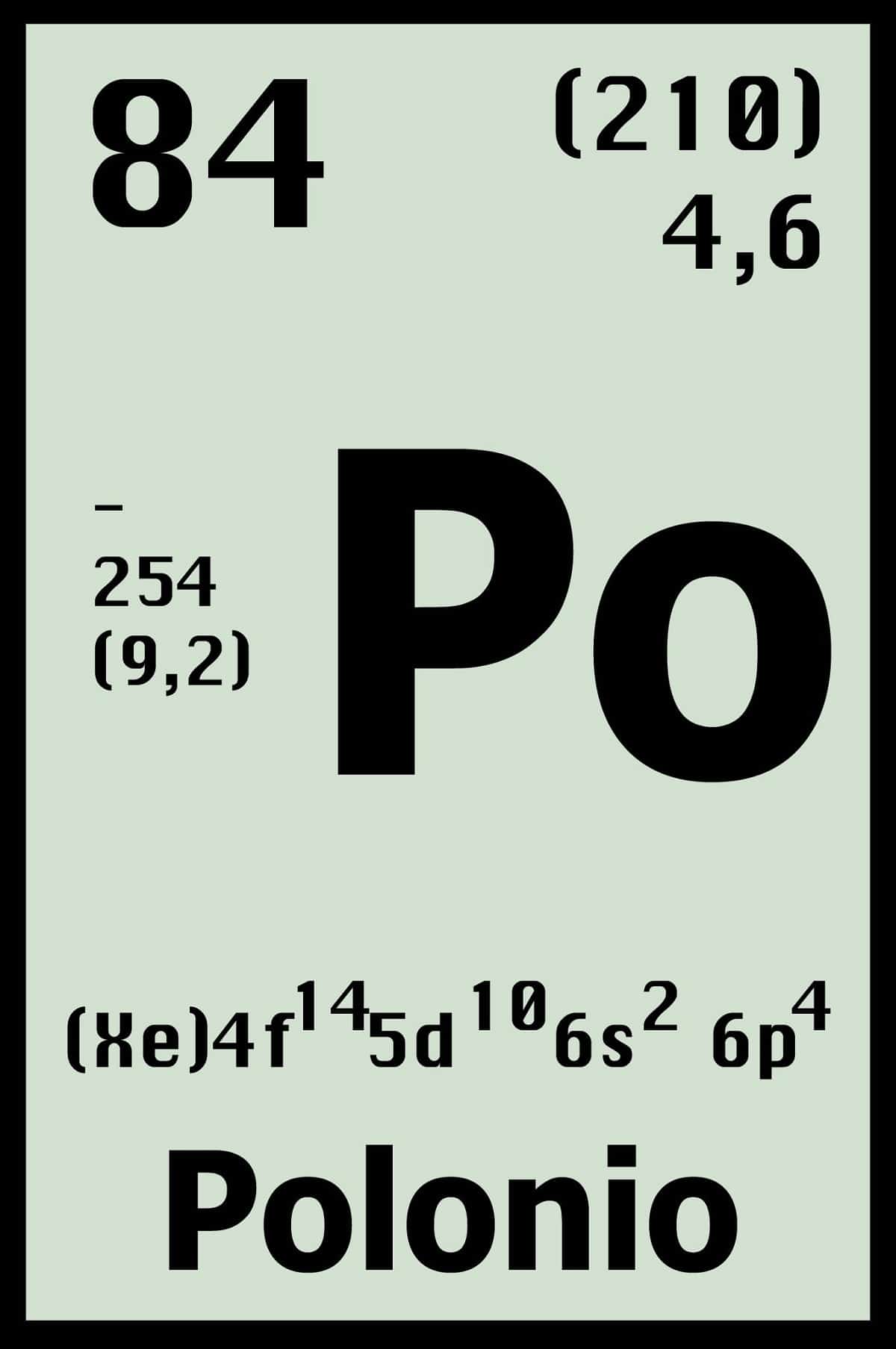
El polonium (Po) is a very rare and extremely volatile radioactive metal. Before the discovery of polonium by the Polish-French physicist Marie Curie in 1898, uranium and thorium were the only known radioactive elements.
In this article we are going to tell you all the characteristics, uses and importance of polonium.
Key features

It is a rare and highly volatile radioactive element.. Curie named it polonium after his native Poland. Polonium is of little use to humans except in a few threatening applications: It was used as an initiator in the first atomic bomb and as a suspected poison in several high-profile deaths. In commercial applications, polonium is occasionally used to remove static electricity from machinery or dust from film. It can also be used as a photothermal source for thermoelectricity in space satellites.
Polonium belongs to group 16 and period 6 of the periodic table. According to the Royal Society of Chemistry, it is classified as a metal because the conductivity of polonium decreases with increasing temperature.
This element is the heaviest of the chalcogens, a group of elements also known as the "oxygen group." All chalcogens are present in the copper ore. Other elements in the chalcogen group include oxygen, sulfur, selenium, and tellurium.
There are 33 known isotopes of this chemical element (atoms of the same element with different numbers of neutrons), and all are radioactive. The radioactive instability of this element makes it a suitable candidate for an atomic bomb.
Physical Characteristics of Polonium

- Atomic number (number of protons in the nucleus): 84
- Atomic symbol (in the periodic table of the elements): Po
- Atomic weight (average mass of the atom): 209
- Density: 9.32 grams per cubic centimeter
- Phase at room temperature: Solid
- Melting point: 489.2 degrees Fahrenheit (254 degrees Celsius)
- Boiling Point: 1,763.6 degrees F (962 degrees C)
- The most common isotope: Po-210 which has a half-life of only 138 days
Discovery

When Curie and her husband, Pierre Curie, discovered this element, they were looking for the source of the radioactivity in a naturally occurring uranium-rich ore called pitchblende. The two noted that the unrefined pitchblende was more radioactive than the uranium that had been separated from it. So they reasoned that the pitchblende must be harboring at least one other radioactive element.
The Curies bought charges of pitchblende so they could chemically separate the compounds from the minerals. After months of hard work, they finally isolated the radioactive element: a substance 400 times more radioactive than uranium, according to the International Union of Pure and Applied Chemistry (IUPAC).
Polonium extraction was challenging because there was such a minuscule amount; one ton of uranium ore contains only about 100 micrograms (0,0001 grams) of polonium. However, the Curies were able to extract the isotope we now know as Po-209, according to the Royal Society of Chemistry.
Where is it located
Traces of Po-210 can be found in the soil and air. For example, Po-210 is produced during the decomposition of radon 222 gas, which is the result of the decay of radium.
Radium, in turn, is a decay product of uranium, which is present in almost all rocks and soils formed from rocks. Lichens can absorb polonium directly from the atmosphere. In northern regions, people who eat reindeer may have higher levels of polonium in their blood because reindeer eat lichen, according to Smithsonian.com.
It is considered a rare natural element. Although it is present in the uranium ore, it is not economical to mine because there are only about 100 micrograms of polonium in 1 ton (0,9 metric tons) of uranium ore, according to the Jefferson Lab. Instead, polonium is made by bombarding bismuth 209, a stable isotope, with neutrons in nuclear reactors.
According to the Royal Society of Chemistry, this produces radioactive bismuth 210, which then decays to polonium through a process called beta decay. The US Nuclear Regulatory Commission estimates that the world produces only about 100 grams (3,5 ounces) of polonium-210 a year.
Uses
Due to its high radioactivity, polonium has few commercial applications. Limited uses for this element include removing static electricity from machines and removing dust from rolls of film.
In both applications, polonium must be carefully sealed to protect the user. The element is also used as a photothermal source of thermoelectricity in satellites and other spacecraft.
This is because polonium decays quickly, releasing a lot of energy as heat in the process. According to the Royal Society of Chemistry, only one gram of polonium reaches a temperature of 500 degrees Celsius (932 degrees Fahrenheit) when degraded.
Atomic bomb
In the midst of World War II, the Army Corps of Engineers began organizing the Manhattan District of Engineers, a top-secret research and development program that would eventually produce the world's first nuclear weapons.
Before the 1940s, there was no reason to isolate it pure or mass produce it because its uses were unknown and very little was known about it. But regional engineers began studying polonium, which turned out to be an important ingredient in their nuclear weapons. According to the Atomic Heritage Foundation, a combination of polonium and another rare element, beryllium, started the bomb. After the war, the polonium research program was transferred to the Mound Laboratory in Miamisburg, Ohio. Completed in 1949, Mound Lab was the Atomic Energy Commission's first permanent facility for the development of nuclear weapons.
polonium poisoning
Polonium is toxic to humans, even in very small amounts. The first person to die from polonium poisoning was probably Marie Curie's daughter, Irene Joriot-Curie.
In 1946, a polonium capsule exploded on his lab bench, which may have been the reason he developed leukemia and died 10 years later. Polonium poisoning was also responsible for the death of Alexander Litvinenko, a former Russian spy who was living in London in 2006 after applying for political asylum.
Poisoning was also suspected in the death of Palestinian leader Yasser Arafat in 2004, when alarmingly high levels of polonium-210 were detected in his clothing, The Wall Street Journal reported.
I hope that with this information you can learn more about polonium and its characteristics.